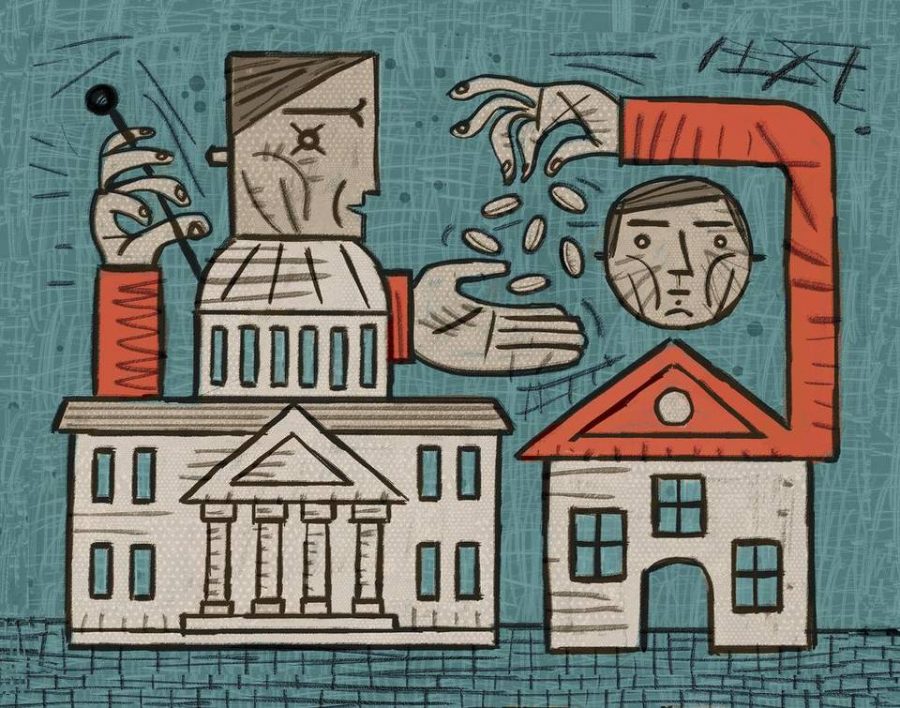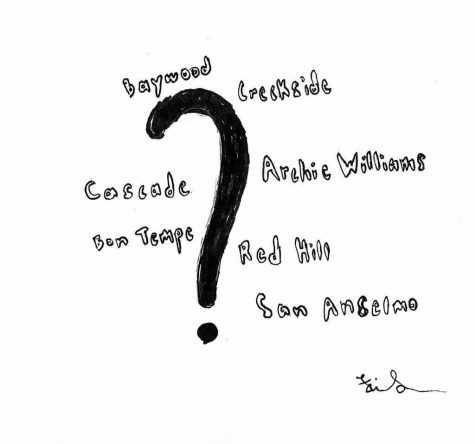Budget crisis dependent on parcel tax
October 17, 2018
Currently, the Tamalpais Union High School District faces an $8 million budget deficit due to increased enrollment and requisite expansion in employees, improvements in educational facilities, and network infrastructure upgrades, according to the TUHSD First Interim Report (March 12, 2017.)
After much discussion regarding the district’s impending budget deficit, the district released its TUHSD Budget Reduction and Recovery Plan, initiated by the district’s Local Control and
Accountability Plan Committee.
“The challenge is that our revenues, which primarily come from property taxes, have been going up but not at the same rate as our growth in enrollment.
The gap between the two means we’re spending more than we’re taking in,” newly appointed TUHSD chief financial officer Corbett Elsen said.
According to Elsen, student enrollment will increase, as will the gap between the district’s revenue and expenses. If the difference between the two grows to be too expansive, the district will have an operating deficit.
Despite the previous Board of Trustees attempt to combat this issue earlier by building up a reserve, it only went so far.
If there becomes too heavy of a reliance on the reserve, it will drastically decrease. The district needs a reserve to handle immediate emergencies and to remain financially secure.
“Clearly, something needs to change,” Elsen said.
With the operating deficit roughly $8 million, the solution comes down to two options.
“We can either significantly reduce costs to eliminate expenses of $8 million, or we can raise revenue by passing a parcel tax,” Elsen said.
In order for the parcel tax to pass, taxpayers will vote on Nov. 6, passage requires 67 percent approval of the voters.
The parcel tax would raise $5 million annually for four years, leaving a leftover deficit of approximately $3 million.
According to Elsen, the district felt asking for the entire $8 million as a parcel tax would result in voters’ disapproval.
“You have to remember that most people living here don’t have a student enrolled in a public school.
“To get a two-thirds approval you can’t over ask or we could be looking at zero revenue. We’re only asking for $5 million because there isn’t enough support for $8 million,” he said.
Either option requires eliminating costs. Whether that be $3 million in reduction or $8 million is up to the taxpayers.
Much of the community backlash regarding this issue stems from the belief that the district saw the growth in enrollment on the horizon.
“The district has had our incoming enrollment numbers since we were in kindergarten. It doesn’t make sense why they’re only just now trying to fix it. As a result, many of our school’s programs and organizations suffer.” senior Ella Ledyard said.
According to Elsen, the district fully acknowledges the fact that things could have been done sooner. However, he does not want that to diminish the progress that has been put in place.
“We’re really trying to learn our lessons from last spring and avoid miscommunication contributing to the confusion of the problem.
It is going to be a difficult process, but continuing the line of communication between the district and community members is really important to us.”
According to Elsen, his advice on this issue is to become educated and understand that it’s a process. Elsen encourages students to open a line of communication with the district to give their input.
“There will be hard conversations. Even if the parcel tax passes, there are still going to be some things people really care about that get eliminated. I do not want to minimize that. We’re all here for students, we’re all here for student learning, and we’re here for equity,” he said.











Erron Ferron • Dec 6, 2018 at 2:46 PM
Erron Ferron says: budget crisis.